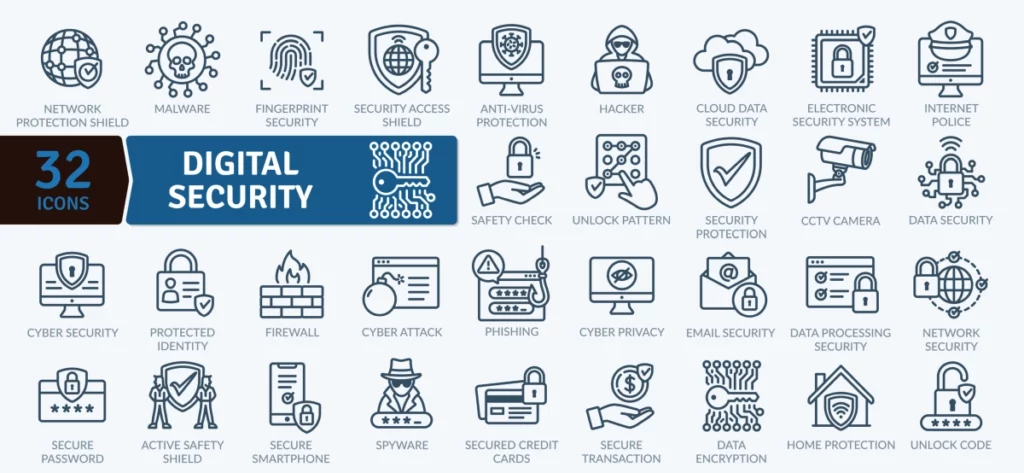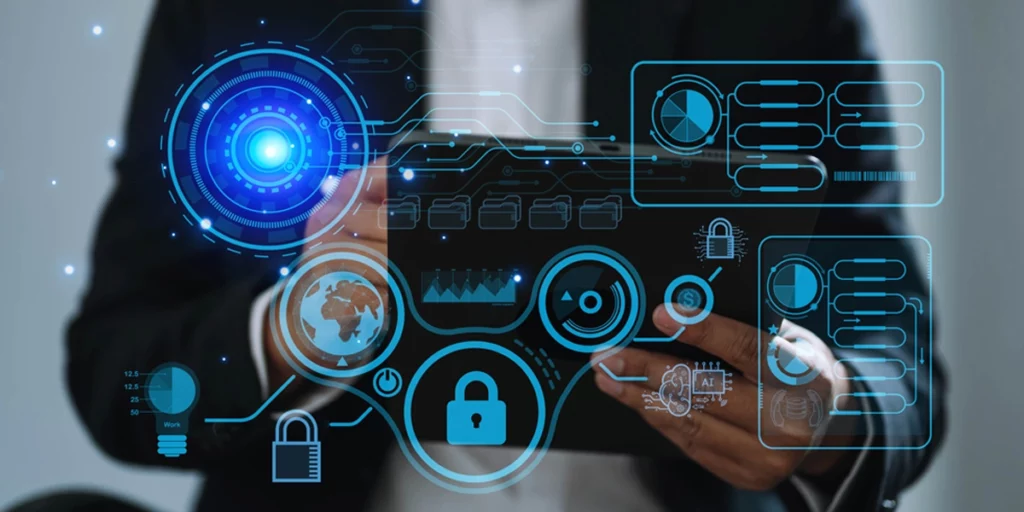The increasingly digitized workplace landscape comes with its own set of challenges. While increased use of cloud software and Bring Your Own Device (BYOD) policies have increased the level of convenience enjoyed by businesses and their employees, they come with their own set of vulnerabilities and security challenges. These include phishing, spyware, malware, exploitation of vulnerabilities, Advanced Persistent Threats (APTs), and more. Cyberattacks are growing in frequency and sophistication to such an extent that CyberSecurity Ventures reports worldwide cybercrime costs are expected to reach $10.5 trillion by 2025. As such, it is necessary for businesses to upgrade their overall level of IT security asset management. This can be accomplished by employing IT Asset Management (ITAM) tool and policies that not only focus on maintaining visibility and control over IT assets, but also IT asset security. Such policies would be focused on preventing unauthorized access, use, disclosure, disruption, modification, or destruction of IT assets.

What is Cyber Security Asset Management?
The first step to protecting an asset is to know that it exists, what condition it is in, and how vulnerable it is to attacks. This is where Cyber Security Asset Management (CSAM) comes in, as a subset of ITAM. CSAM gives businesses the processes and protocols necessary to continuously discover assets, create an inventory database, monitor devices, and track an organization’s assets throughout their life cycle. These procedures are meant to discover assets in the cybersecurity framework, what they are used for, identify any security vulnerabilities they may have and close the gaps for their protection against cyber attacks. A properly implemented CSAM policy covers all assets – whether physical, virtual or cloud-based – that can connect or interact with other assets on an organization’s network. These include traditional endpoints (desktops, laptops and mobile devices), cloud assets, IoT sensors, virtual and hardware appliances, operating systems, data centers, users and user-owned devices.

What are the obstacles to implementing CSAM?
To protect a company’s assets, CSAM tools and procedures have to detect all assets on a network, create an asset inventory, aggregate data on the inventory, and test whether these assets are compliant with relevant policies. Any obstacles to this process would be considered a CSAM challenge. They include:
Logistical difficulties
Depending on the size of an organization, users and assets can be spread across cities, countries and even continents. This makes monitoring and inventorying assets especially challenging. The problem is exacerbated by the use of hardware or software which is not supported by the company’s central IT department, also known as shadow IT. Furthermore, all assets have to be managed based on the asset management category they fall in, based on the unique needs and best practices recommended for different IT assets.
Public clouds
Fully virtualized assets often reside in public clouds for a number of reasons. It is difficult to achieve visibility and control over assets in a public cloud due to their dynamic nature. Traditional asset management tools are often incapable of providing real-time visibility that is required to track these assets. The sharing of security responsibilities between the cloud service provider (CSP) and customer complicates things further, often resulting in exploitable misconfigurations.
IT/OT convergence
The distinct security requirements and legacy systems of IT and OT create significant security challenges when the two converge. Not only does the integration of the two integrated environments create complexity, it also increases the surface area that is vulnerable to attack, made worse by cultural and organizational differences. Addressing these challenges requires a coordinated CSAM approach that employs advanced security technologies, continuous monitoring and synergized coordination between IT and OT teams.
Virtual environments
Virtual environments are constantly in a state of flux, creating difficulties related to visibility, control and integration. The biggest security gap arises from services with very short half-lives, which can create issues if they get infected with malware. Addressing these challenges requires specialized tools and continuous monitoring to ensure proper security coverage.
Unknown zones
Unknown zones refer to areas which cant be reached by most asset management tools. They exist in every organization and are a major security gap due to lack of visibility, offering vulnerable entry points to cyber criminals, compliance issues, hindering of incident response efforts and integration challenges.

How will CSAM help your business?
The comprehensive visibility provided by CSAM is indispensable for protecting a business’s assets in the modern digital landscape. This visibility also helps improve incident response times, ensures better regulatory compliance, and gives insights into asset use and investment that support cost efficiency and strategic decision-making. In addition to this, a well-executed CSAM policy also reduces downtime and enhances productivity because of effective inventorying of assets. Collectively, these advantages lead to a business being more secure, resilient against threats, profitable and productive.
How does CSAM work?
CSAM procedures can be broken down into five key steps:
Asset discovery and inventory
CSAM policies and frameworks employ specialized, automated tools to discover assets present on a company’s network. This would include hardware, software, data and network components. Identified assets are then cataloged into an inventory.
Classification
Once inventoried, assets are classified based on how vulnerable they are to attack, along with the potential impact on the organization if said asset was to be targeted by cybercriminals. Assets that are essential to business operations and those that contain sensitive data are prioritized for the most stringent security measures.
Implementation of security controls
CSAM involves the implementation of two levels of security controls:
1. Baseline security controls
These are security measures that are implemented on all assets. They include firewalls, antivirus software, encryption and access controls.
2. Advanced security controls
These controls are applied to higher priority assets. They include measures such as multi-factor authentication, intrusion detection systems, and advanced threat protection.
Round-the-clock monitoring and management
A robust CSAM policy would mandate constant oversight of all network-accessible assets. Anomalies, unauthorized access and potential threats are immediately recognized using a combination of security information, event management (SIEM) systems and other monitoring tools. In the event of a security breach being detected, a pre-established incident response plan would already be in place to neutralize the threat.
Regular audits and updates
Timely updates and patches are an important part of CSAM to protect your business’s assets against known threats. For complete protection, it is also important to decommission obsolete or outdated assets. Audits are a security necessity to ensure compliance with internal policies and external regulations. Additionally, audits also help detect potential vulnerabilities.

What are the differences between CSAM and ITAM?
CSAM is a subset of ITAM. Both are related to managing an organization’s assets, but with key differences in focus and objectives. These are highlighted in the table below:
| Area | ITAM | CSAM |
| Key function | Inventory management, lifecycle management, compliance, cost management, asset tracking | Asset identification, risk assessment, vulnerability management, incident response and security compliance |
| Benefits | Improved financial control and asset visibility, enhanced decision making related to IT investments, better compliance with regulatory and licensing environments | Improved ability to protect sensitive data and systems, improved incident response and recovery capabilities, reduced risks of cyber attacks and data breaches |
| Activities | Asset inventorying, lifecycle management, and ensuring compliance with licensing agreements | Vulnerability assessment, threat analysis, and incident response planning (CSAM also includes asset inventorying but through a lens that is primarily security-focused) |
The modern business landscape comes with a number of challenges which makes CSAM essential to keep operations running smoothly. The rapidly accelerating pace of digital transformation means businesses are increasingly reliant on a diverse array of digital assets. Not only is it necessary to maintain vigilance over these assets, they are also under threat from a slew of constantly evolving, and increasingly frequent cybercriminal activities. Ransomware attacks alone have increased by 13% over the last five years. These threats have prompted authorities to enforce a number of stringent data protection regulations which businesses must comply with to avoid legal penalties and maintain customer confidence. As a framework, CSAM addresses all the issues mentioned above, making it indispensable for organizations looking to compete in the current environment.








